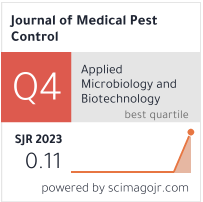Increased Red Cell Distribution Width And An Increased Risk of Transient Tachypnea of The Newborn
Abstract
Background: Transient tachypnea of the newborn (TTN) is a common neonatal respiratory disorder resulting from a delay or incomplete removal of lung fluid following birth that impairs gas exchange. Red cell distribution width (RDW) is one of the red blood cell indices that have been found to be associated with many adverse neonatal outcomes. Aims: To determine the utility of an elevated RDW of predicting TTN in newborns delivered by cesarean section. Methods: A case–control study of 51 neonates with TTN (cases) and 67 healthy neonates (control) in Al-Zahraa Teaching Hospital in Iraq. Within 6 hours of birth, newborns whose respiratory distress had resolved were considered to be controls, and those who continued with respiratory distress were considered to be cases with TTN. Two mL of cord blood was collected from all newborns within 60 s of delivery and analyzed for complete blood count and RDW. Results: RDW values were significantly higher in cases than in controls (p < 0.001), as were hemoglobin, respiratory rate, and duration of admission. RDW was significantly correlated with respiratory rate (r = 0.38, p < 0.001) and duration of admission (r = 0.38, p < 0.001). The cutoff RDW value that significantly predicted TTN was 14% with a specificity of 65% and a sensitivity of 70%. Conclusion: Elevated RDW is significantly associated with the development of TTN, increased respiratory rate, prolonged duration of tachypnea and admission. RDW > 14% appears to be a predictor for the development of TTN.
Full text:
PDFReferences
Raid M R Umran, Afraa Mohammed Majid



